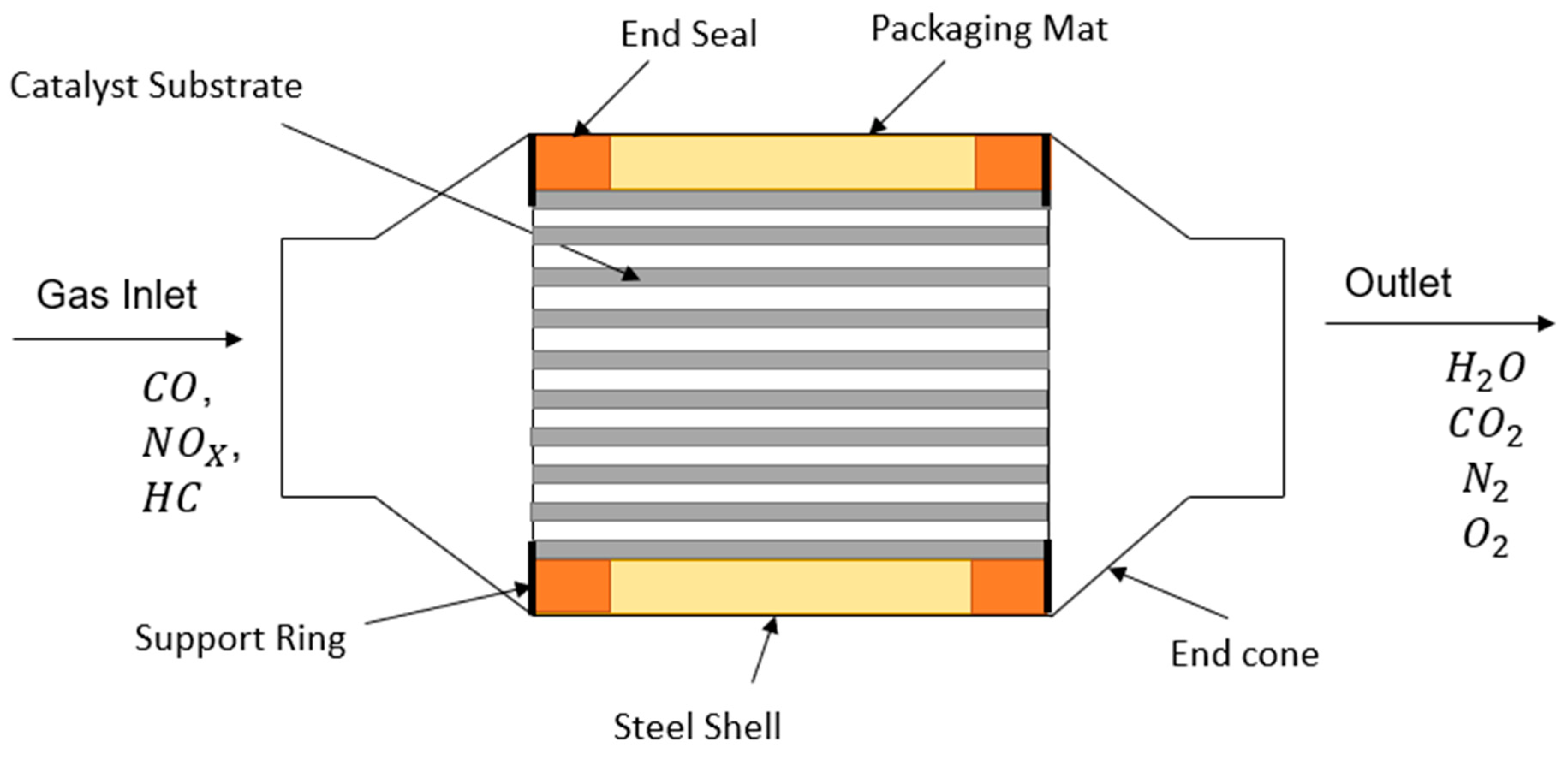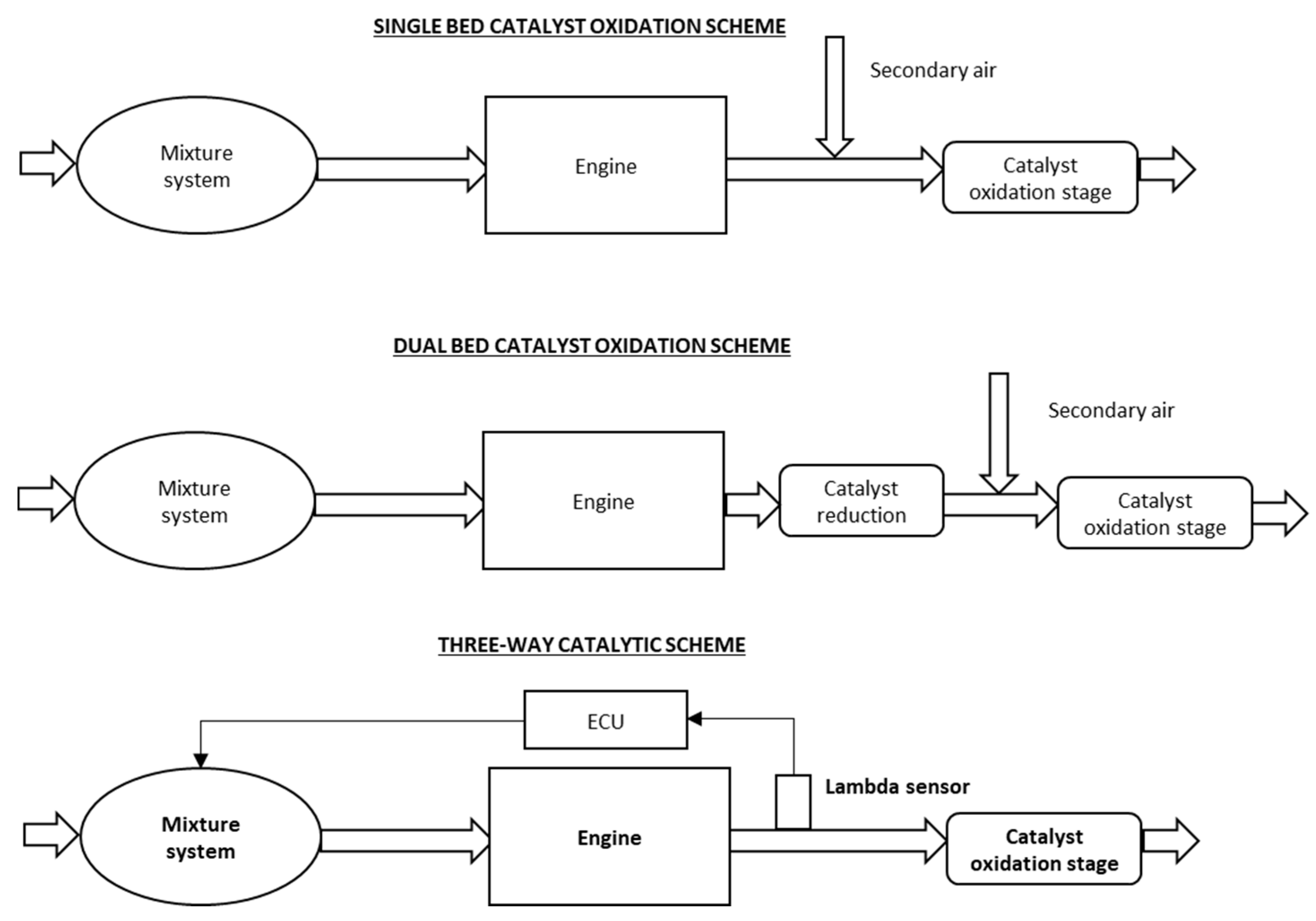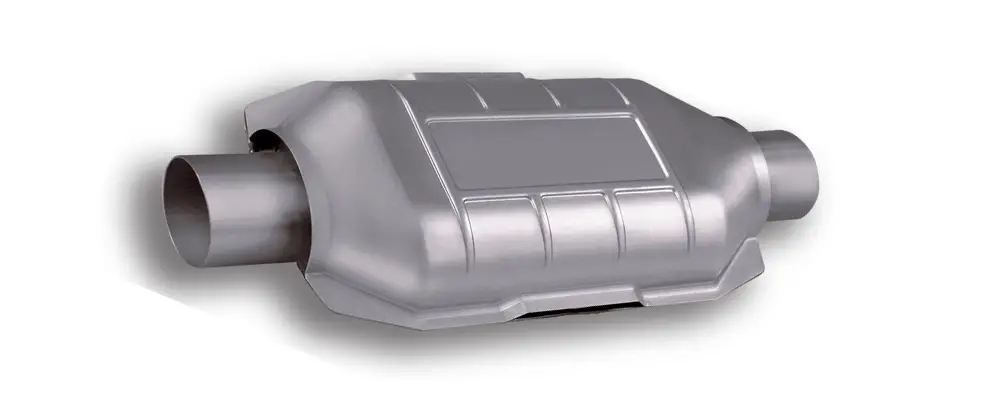Catalytic Converters Definition In Chemistry
Catalytic converters are a key component of a cars emissions system reducing the amount of harmful pollution going out the tailpipe. CREDITSAnimation Design.

Catalytic Converters Let S Talk Science
Catalytic Converters If you drive a petrol-fuelled car itll be fitted with a three-way catalytic converter.
Catalytic converters definition in chemistry. Typically catalytic converters require toxic air to pass through a honeycomb-shaped set of grills which increase the surface area of the catalyst material the gasses are exposed to. Catalysis k t l s s is the process of increasing the rate of a chemical reaction by adding a substance known as a catalyst k t l s t Catalysts are not consumed in the reaction and remain unchanged after it. These are so-called because they deal with the three major pollutants from vehicle emissions weve discussed.
A catalyst is a substance that helps a chemical reaction happen or makes it go faster. Catalytic converters which first appeared on US. The Chemistry of the Catalytic Converter The oxidization of volatile hydrocarbons and CO2 is a simple process aided by a variety of chemical compounds.
Catalytic converters use reduction and oxidation redox reactions to reduce harmful emissions. A reaction chamber typically containing a finely divided catalyst usually platinum and other metals such as rhodium palladium and gold into which exhaust gases from an automotive engine are passed together with excess air so that carbon monoxide and hydrocarbon pollutants are oxidized to carbon dioxide and water and nitrogen oxides are reduced to nitrogen and oxygen gases. They use expensive metals like platinum palladium and rhodium as the heterogeneous catalyst.
Simon FaulknerLearn the basics about catalytic converters as a part of the overall environmental chemistry. They contain platinum and rhodium which. The metals are deposited as thin layers onto a ceramic honeycomb.
Catalytic converters change poisonous molecules like carbon monoxide and various nitrogen oxides in car exhausts into more harmless molecules like carbon dioxide and nitrogen. Catalysts are not consumed in the reaction. It helps reduce nitrogen oxides NO x by removing nitrogen atoms from nitrogen oxide molecules NO and NO 2.
How Do Catalytic Converters Work. Enzyme Kinetics and Enzyme Inhibitorsfor a review of how enzymes function as catalysts In car exhaust incomplete combustion produces carbon monoxide CO and organic hydrocarbons VOCs. Catalytic converters The exhaust systems of cars are fitted with catalytic converters.
Catalysts can lead to reactions that produce less waste or have a greater atom economy. A device on a car that reduces the amount of poisonous gas that is released from the exhaust 2. Take the example of the catalytic converter that can be found in a car.
One of them the converters input is connected to the engine and brings in hot polluted fumes from the engines cylinders where the fuel burns and produces power. Two-Way Catalytic Converters Allows oxidation of CO carbon monoxide to less-harmful CO2 carbon dioxide Allows oxidation of HC unburned hydrocarbons to CO2 carbon dioxide and H2O water. This lets the free oxygen form oxygen gas O 2.
Mixing surface area and temperature are. A catalytic converter is a large metal box bolted to the underside of your car that has two pipes coming out of it. Drug Strategies to Target HIV.
These help reduce the release of toxic gases from the exhaust pipe. This catalytic converter gets its name because it uses a catalyst to help in the reaction to convert the toxic gas into a nontoxic form. Catalytic converter definition is - an automobile exhaust-system component containing a catalyst that causes conversion of harmful gases such as carbon monoxide and uncombusted hydrocarbons into mostly harmless products such as water and carbon dioxide.
As the name implies catalytic converters contain catalysts. If the reaction is rapid and the catalyst recycles quickly very small amounts of catalyst often suffice. As its name suggests the converter contains a catalyst.
A catalyst is a compound used to help a reaction occur. A catalytic converter is a simple device that uses basic redox reactions to reduce the pollutants a car makes. It converts around 98 of the harmful fumes produced by a car engine into less harmful gases.
It is composed of a metal housing with a ceramic honeycomb-like. Vehicles in 1975 transform hydrocarbons carbon dioxide and nitrogen oxides the bad stuff into water vapor and carbon monoxide the stuff we can live with. They use a reduction catalyst composed of platinum and rhodium.
Unburnt hydrocarbons carbon monoxide and nitrogen oxides.
Learn About Palladium In Catalytic Converters Chegg Com

Catalytic Converter An Overview Sciencedirect Topics
Twc Three Way Catalytic Converter

Catalytic Converters Let S Talk Science

Catalytic Converter An Overview Sciencedirect Topics
What Is Catalytic Converter In Cars How Does It Work Carbiketech

Catalytic Converters Their Purpose And Importance

Chemistry Free Full Text Catalytic Converters For Vehicle Exhaust Fundamental Aspects And Technology Overview For Newcomers To The Field Html

Chemistry Free Full Text Catalytic Converters For Vehicle Exhaust Fundamental Aspects And Technology Overview For Newcomers To The Field Html
What Is Catalytic Converter In Cars How Does It Work Carbiketech

Catalytic Converter Working In Exhaust System In Hindi Youtube

Catalytic Converters Let S Talk Science
How Does A Catalytic Converter Work Legend Smelting And Recycling

What Is Catalytic Converter In Cars How Does It Work Carbiketech

Chemistry Free Full Text Catalytic Converters For Vehicle Exhaust Fundamental Aspects And Technology Overview For Newcomers To The Field Html

Chemistry Not As Easy As A B C Bernie S Basics Abc Science
What Is Catalytic Converter In Cars How Does It Work Carbiketech


Post a Comment for "Catalytic Converters Definition In Chemistry"